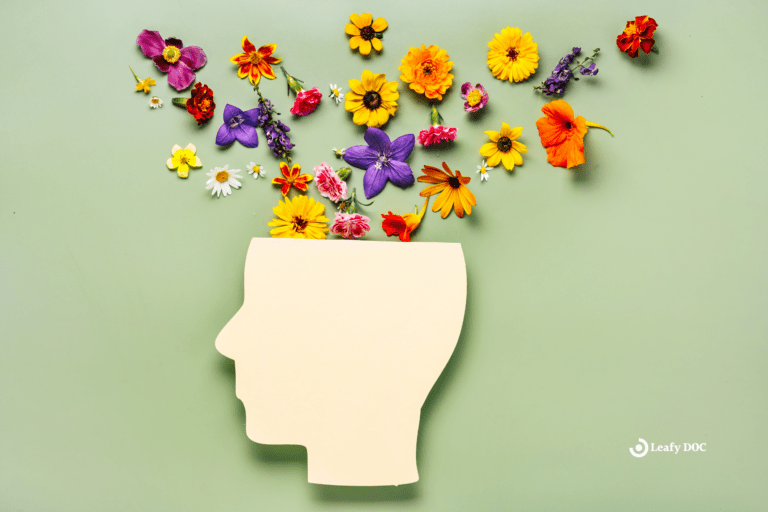Insomnia
For patients with specific conditions such as chronic pain, posttraumatic stress disorder, and multiple sclerosis, smoking weed before bed may help them fall asleep faster, wake up less during the night, and enjoy better sleep quality.
Many young adults use cannabis to self-treat insomnia, anxiety, and pain. Among these users, the effectiveness of smoking marijuana for sleep is more uncertain. However, a study on individuals with insomnia found that many participants reported relief from their symptoms when using cannabis. Some studies suggest a distinction between those who use cannabis daily and less frequent users in how marijuana affects their sleep patterns. Still, more research is needed for a solid conclusion.
What is Insomnia?
Insomnia is a sleep disorder that is common among American adults. This condition can make it hard to fall and stay asleep throughout the night. Patients report feeling tired when waking, which can affect energy levels, mood, work performance, quality of life, and overall health.
Most adults need seven to eight hours of sleep a night, although that varies per individual.
Short-term insomnia can last for days or weeks and is typically the result of stress or a traumatic event. Some people experience long-term insomnia that lasts for a month or two at a time.
Long-term insomnia is often associated with other medical conditions or prescribed medication.
Simple changes in daily habits can often help get your sleep cycle back on schedule, although sometimes alternative treatments are needed.
What is a Cannabinoid?
Cannabinoids are found in the cannabis plant and are produced naturally by the human body. We have an endocannabinoid system (ECS) that internally produces cannabinoids. These compounds are crucial to maintaining internal balance through many body systems.
Cannabinoids interact with our ECS to help maintain functional balance through a system of messenger molecules and receptors. Sleep, energy, cardiovascular function, reproduction, stress, chronic pain, motivation, appetite, digestion, and more are some of the body functions that cannabinoids impact.
THC vs. CBD
The two most common cannabinoids are tetrahydrocannabinol (THC) and cannabidiol (CBD). It naturally occurs in cannabis, but some have created synthetic cannabinoid products as well. Some cannabinoids are more likely to cause psychoactive effects than others.
THC is the cannabinoid most likely to cause euphoria, relaxation, and increased appetite. CBD is the cannabinoid least likely to cause these effects and is often the choice for people looking for pain relief without the high. When it comes to marijuana use, different strains will have certain levels of these cannabinoids, thus affecting the sedating effects.
How do cannabinoids affect sleep?
A recent study reported that cannabis shortens the time it takes to fall asleep, both for sleep problems and for people who fall asleep without trouble.
Many researchers agree that the sleep-enhancing effects of cannabinoids are due to their interactions and how they bind with cannabinoid receptors in the human brain. When cannabinoids bind to these receptors, they send messages to increase adenosine levels and suppress the brain’s arousal system. Combined, these two effects may help cannabis users feel tired, so there is less time counting sheep and more time dreaming.
Terpenes
Cannabinoids have recently drawn attention for their potential health benefits related to sleep, mood, pain, and other health issues. Terps can also play a significant role in the psychoactive effects of cannabis, including its ability to affect sleep. Scientists are still learning about how terpenes affect the body and mind.
Terpenes are small molecules in cannabis buds that create their smell and taste. Terpenes are found in many natural plants, fruits, and flowers other than cannabis. Over a hundred unique terpenes have been identified, and various combinations of terps in different strains of cannabis create distinctive flavors and aromas. Scientific research shows terpenes can also affect energy, mood, sleepiness, and alertness.
Some of the most common terpenes for sleep aid are:
- Myrcene. This terpene is commonly occurring in cannabis; this terpene is also found in many fruits and herbs, including mangoes, basil, thyme, lemongrass, and the sleep-promoting plant’s hops and ylang-ylang. Myrcene has been shown to have anti-inflammatory and soothing effects.
- Caryophyllene. This anxiety and chronic pain-relieving terpene may promote sleep due to its relaxing, analgesic properties. It has a spicy aroma found in cloves and black pepper.
- Limonene. According to research, this citrus-flavored terpene, found in citrus peels and cannabis, and other plants, has reduced anxiety and stress. Limonene may contain anti-depressant effects and could reduce OCD symptoms. Scientists think limonene’s calming, mood-lifting results come from its ability to elevate serotonin levels in the brain. That may also make this terpene a sleep promoter.
- Terpineol. This terpene has relaxing, sedative effects and can also be found in lilac, pine, and eucalyptus.
- Linalool. This lavender-scented terp can be found in many plants, including cannabis. Studies show linalool can reduce anxiety and depression symptoms and help guard the immune system against stress damage. Linalool increases adenosine, a sedating hormone that helps us fall asleep.
American Sleep Association
According to the American Sleep Association, up to seventy million Americans experience sleep disorder symptoms. The same study shows that forty million U.S. adults experience insomnia every year, and approximately ten to fifteen percent will deal with chronic insomnia at some point in their lives.
Sleep Needs By Age Group
- Adult: 7 – 9 hours
- Teenager: 8 – 10 hours
- Child 6 – 12 years: 9- 12 hours
- Child 3 – 5 years: 10 – 13 hours
- Child 1 – 2 years: 11 – 14 hours
- Infants 4 -12 months: 12 – 16 hours
How to Prepare for Bedtime
A few ways to promote melatonin production and get better sleep include:
- Allow natural light into the room during the day
- Close blinds and shut out any light before bed
- De-clutter the room
- Take a warm bath or shower
- Apply essential oil pillow mist
- Turn on a diffuser with lavender
- Light stretching
- Meditation
- Limit screen time and blue lights
- Dim lights around the house
- Turn the a/c to cooler temps
- Use an air humidifier or fan for noise
- Turn on beach or rain sounds for sleep aid
- Early morning behavior should include self-care and little screen time
REM sleep disturbance
According to a study from 2008, ingesting marijuana strains with high THC levels can reduce the amount of REM sleep you get. Reducing REM sleep means reducing dreams, and for those who experience posttraumatic stress disorder, high THC strains can also help treatment-resistant nightmares.
Weed Hangover
Higher doses, especially of Sativa strains, could produce a groggy feeling in the morning. However, rather than a hangover, it feels like the day after taking Nyquil or a sleeping pill. If you have an active lifestyle and don’t want to feel sleepy during the day, try smaller doses before bed and possibly choose a hybrid strain for balance to feel the positive effects without the rest.
In Conclusion
Certain cannabinoids are better at promoting a healthy sleep cycle, while others may provide an energy boost. We recommend chatting with a local budtender or your MMJ physician/health coach about the best cannabis strains for sleep quality. Once you find the right cannabis strain, you’ll be on your way to a refreshing deep sleep.
Last Updated: September 30, 2025
Get Your Medical Card
Connect with a licensed physician online in minutes
Table of Contents
Keep Reading
-
Marijuana and Mental Health: Understanding the Link and Risks
Explore the link between marijuana and mental health and gain a better understanding of the potential risks and benefits. Learn how cannabis can impact your mental well-being.
-
Managing Mood Disorders With Cannabis: An Emerging Option
Looking for a game-changer in managing mood disorders? Explore how cannabis is revolutionizing treatment options and transforming lives. Click now to discover more about cannabis and mood disorders!
-
8 Steps to Enhancing your High
Looking to enhance your highs? Learn 8 simple and effective steps to achieving a safe and enjoyable high. Get the most out of your experience with this comprehensive guide!



